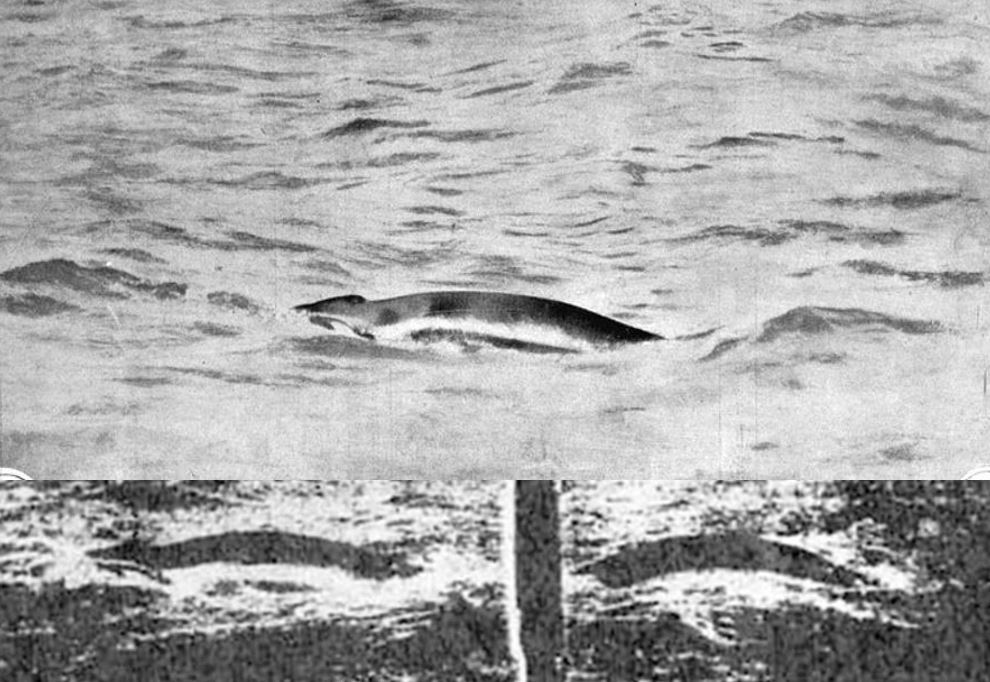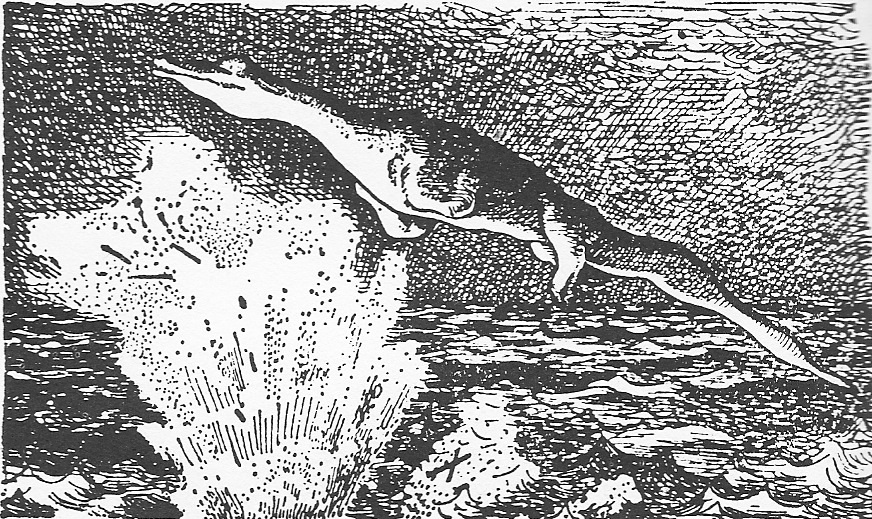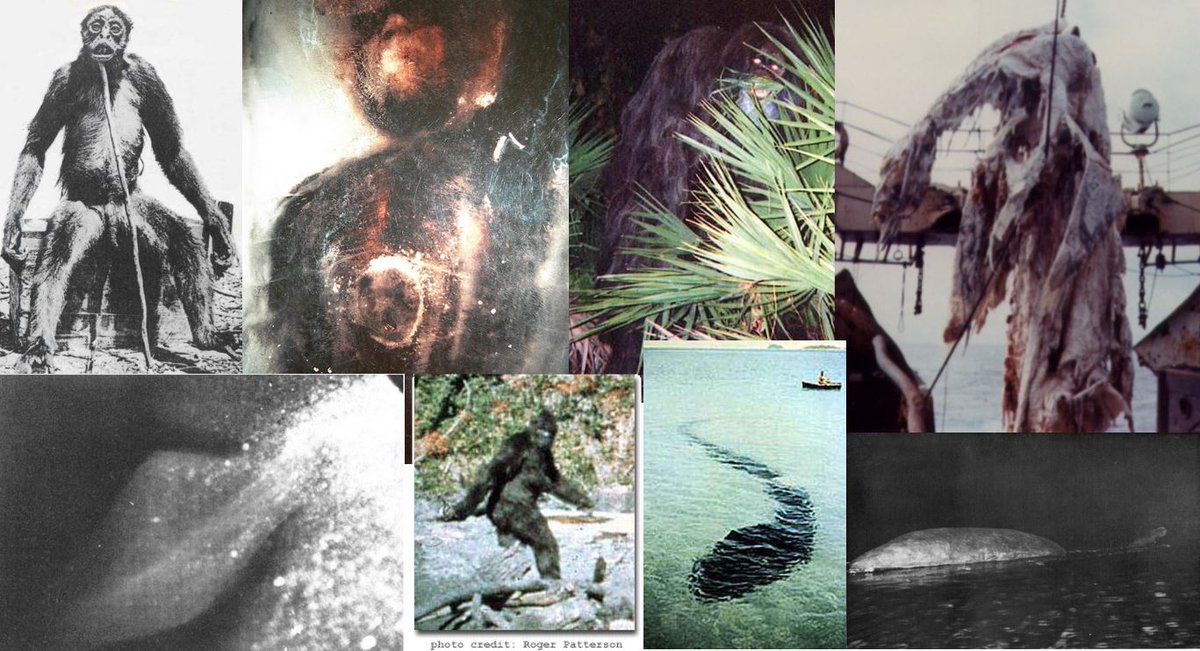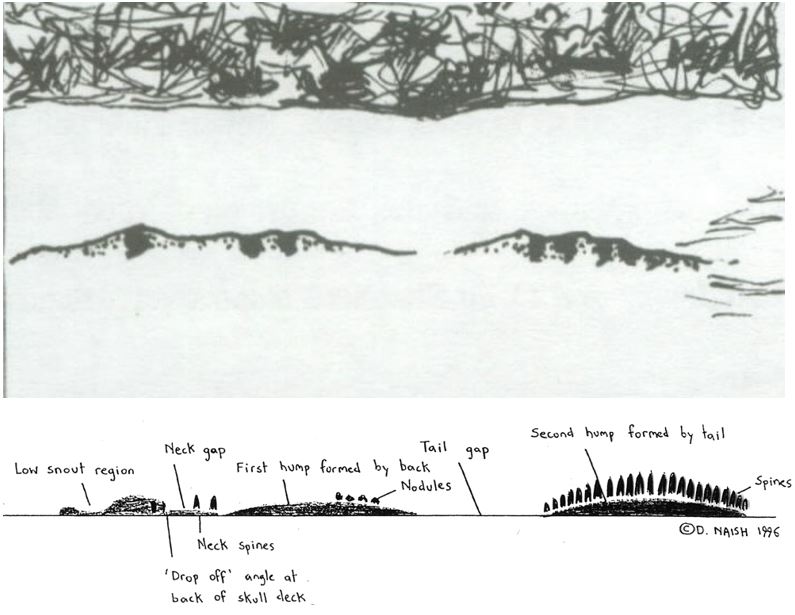
Time once more for a #TetZoocryptomegathread. Again, it’s on #seamonsters, and again on a supposed actual photo of a live one! I refer of course to the enigmatic Professor Sharpe ‘1908’ photo, which I first wrote about back in 2008… 



The photo was brought to recent attention by cryptozoological researchers Dwight Smith and Gary Mangiacopra in a 2001 article, published in a special volume of Crypto devoted to aquatic #monsters... 

It concerns a photo that’s been republished more than once since its first appearance in a Californian newspaper, and must have been seen by thousands, if not millions, of people… #cryptozoology #monsters
The photograph was ‘rediscovered’ in 1980 by Gary Mangiacopra – a researcher well known for his many investigations of unidentified aquatic animals – while he was looking through old newspaper archives....
Featured in a 1908 article from the San Francisco Examiner entitled ‘To Catch a Sea Serpent’, the photo extends across two pages and depicts an elongate, two-humped creature in the water…
The caption explains that the photo – described as “the first photograph of a sea serpent” – was ‘taken by Prof. Sharpe from the steam yacht Emerald as the monster rushed past at 20 miles an hour’ (here are the relevant pages from Smith & Mangiacopra’s article) … 



The photo was published again in The American Weekly on New Year’s Eve 1933 in an article that was apparently inspired by the recent rash of #Caddy sightings from British Columbia, and of course by the publicity surrounding #LochNess…
This 1933 outing of the photo – shown here – differed from the 1908 version in being longer, and in showing the start of what appears to be a third hump far to the right of the frame.... #seamonster #cryptozoology 


.... Another outing of the photo was in 1944 when it appeared in an American Weekly article on monster sightings from Idaho’s Payette Lake. This time Sharpe was described as Professor B. A. Sharpe…
Smith & Mangiacopra (2001) reproduced the images and discussed them in their article. They were unable to get any information on the images at all from the San Francisco Examiner (which was still going when Mangiacopra started his investigations in 1981)…
As they described, the object in the photo looks like a long, cylindrical creature with a dark dorsal and light ventral surface. A triangular object at left could be a head or a fin. Foam or spray appears at the right end of each hump, creating the impression of rapid movement… 

Is this image a fake? Prof. George Zug (a herpetologist at the Smithsonian who has often commented on cryptozoological data) opined that an object at the far left of the first hump looks like a rope, and he suspected for other reasons that the photo was a fake…
Smith & Mangiacopra agreed with this, but still wondered whether “It is a genuine, overlooked cryptid photograph that was seen on three occasions and by tens-of-millions [sic] of readers who did not realize its significance?”…
They ended by noting that, even if it is nothing more than a hoax, it’s the oldest known existing photo claiming to depict a sea-serpent...
In my 2008 article, I was under the impression that nothing was known of Prof. B. A Sharpe, or of the yacht Emerald, nor is it known where the photo was taken, how big the ‘animal’ was, or when the photo was taken…
But waitaminute... isn’t ‘Prof B. A. Sharpe’ the famous ornithologist Richard Bowdler Sharpe (1847-1909) of the British Museum of Natural History? Sharpe is well known for his ornithological works, among which are catalogues of the birds owned by the BMNH during the late 1800s... 



Sharpe also has also several bird species named after him, including Sharpe’s apalis, Sharpe’s starling and Sharpe’s longclaw (art by K. G. Keulemans, of course)… #birds #birdart 

Are we really saying, then, that a famous and well-known zoologist photographed an actual real sea serpent? Smith & Mangiacopra had no clue who Sharpe was, noting in their conclusions that they’d been unable to work out who he was...
They assumed he was American and noted that efforts to find such an individual in “early 20th century editions of American Men of Science” had been unsuccessful. It would be exciting if Sharpe HAD photographed a sea-serpent, but read on…
Inspired by my 2008 article, Loren Coleman @CryptoLoren looked into the ‘Prof Sharpe sea serpent’ case himself. He found that Smith & Mangiacopra didn’t show the ‘first’ outings of the photo at all. It had actually been published in April 1906 in the Illustrated London News… 

Here, it was noted as “a curious creature” seen “between Madeira and St Thomas”. Madeira is in the Azores and St Thomas is in the Caribbean, so the photo was taken somewhere in the North Atlantic. It hadn’t first appeared in US publications in 1908, but in British ones in 1906… 

... (note the little decorative Daedalus sea monsters round the edges). And especially important is that the original photo looks very different from the American versions we saw earlier…
It shows a single hump! And, whatever it shows, it doesn’t look especially remarkable: it’s probably the back of a whale (presumably a rorqual). It could be a rorqual with a damaged dorsal fin. Or... 

.... could it be that the triangular eminence at far left is the raised ‘splashguard’ around the blowhole? Whatever, there isn’t any reason here to think that we might be seeing an unknown species… (Biscay Fin whale photo by Alex Srdic)... 

We therefore have to conclude that those photos showing two and even three humps are cheaty modifications of the original, made by duplicating the first hump to make a whale into a sea serpent... 

This negates previous suggestions (made by John Conway and others back in 2008) that the object might have been painted onto an original photo, something that always seems problematic in view of how ‘correct’ the sea spray and wave action looked relative to the hump…
And that’s about it! Another alleged sea monster image bites the dust, dammit. The original #TetZoo article on this case is here: web.archive.org/web/2012091503… #seamonsters #cryptozoology
Here’s your reminder that I’ve published a good list of these #TetZoocryptomegathread things now, follow the # for more. There are plans to compile them for a book or something! #cryptozoology #monsters 







Update: upthread, I meant to say 'But waitaminute... _could_ ‘Prof B. A. Sharpe’ be the famous ornithologist Richard Bowdler Sharpe'? This needs looking into, it could be totally wrong.
• • •
Missing some Tweet in this thread? You can try to
force a refresh





















